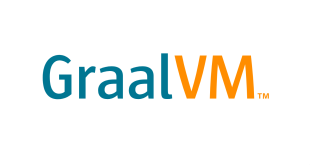Het bedrijf Jetbrains heeft voor vele talen een populaire Integrated Development Environment (IDE) gemaakt. Denk aan IntelliJ IDEA, PyCharm en onder vele andere WebStorm. Voor de betaalde (Ultimate of Professional) versies van deze IDE’s is een handige plugin beschikbaar die standaard mee-ge-bundled is in die versies. De HTTP Client. Een plugin voor het maken van HTTP requests en nog veel …
Read More »Blog Layout
Spring Boot – Annotation Reference – 01/a
In 2018, I was introduced to the topic of Microservices and Spring Boot via a formal training, during my brief stint as a Senior Architect in Manila, Philippines. Though I had worked on a ‘similar architecture’ way back in 2007-’08 while working as a Software Engineer at Symantec – I found the idea of the Uber JAR really exciting. Also, since …
Read More »A Faster Way to Build React + Spring Boot Apps Using Hilla 1.3
It’s time to build a new web application. You’ve decided to use React with a Java back end, so you’re good to go right? Not quite. There’s still a lot of work to do to set up a new project, configure your build tools, find good UI components, and create APIs for communication between your front end and back end. …
Read More »GraalVM, wat heb je eraan?
Java en native performance is al sinds het begin een discussiepunt. De JVM is in de loop der jaren weliswaar een heel stuk sneller geworden en kan voor veel doeleinden aardig concurreren met andere talen en platformen, toch zijn er nog wel een paar punten waar het nog een achterstand heeft op native applicaties. Met name als het om opstarttijd …
Read More »Writing a Profiler from Scratch: Introduction
Async-profiler is undoubtedly one of the most used open-source Java profilers out there. Its most commonly used feature is sampling a given Java program’s stack traces and visualizing them as a flame graph. I would recommend reading the excellent async-profiler manual by Krzysztof Ślusarski or taking a look at my profiling playlist on YouTube if you’re new to this tool. …
Read More »Challenges when Developing a GUI for FIX
In this article, we explore the challenges in developing a Graphical User Interface (GUI) for Financial Information Exchange (FIX) data. FIX is both a protocol and a message format, but to create a FIX GUI we will focus just on the message format. A FIX message is a standard message format for transmitting financial and investment banking data. Below is …
Read More »Spelen met de Kubernetes API
Er is veel veranderd door de komst van containers en de container platformen. We kunnen het platform in zijn geheel als een nieuwe computer beschouwen, met Kubernetes als operating system. Net als ieder operating system, is er hier ook een API. Dus waarom gebruiken wij dit niet in onze applicaties? Auteur: Vincent van Dam Met behulp van een simpele …
Read More »How Java Litters Beyond the Heap: Part 2, Distributed Databases
Let’s create a simple Java application using a distributed database for the user data and see how the database generates litter in response to application requests. While the Java Virtual Machine executes our code at runtime, it generates garbage in the heap, which is dutifully collected by the garbage collector. This is a known fact. However, at the same time, …
Read More »Why developers should love their tests
Ontketen de volledige kracht van je tests Wie al een tijdje in het software development vak zit, zal het wel herkennen. Om de huidige feature af te ronden, moet je nog een aantal tests schrijven. Het blijkt verrassend lastig te zijn om het geheel automatisch getest te krijgen en we weten per slot van rekening al dat het werkt! Waarschijnlijk …
Read More »Azul Provides the CRaC in AWS SnapStart Builds
At Azul, we are very excited about the Amazon Web Services launch of SnapStart for Lambdas. SnapStart is based on the CRaC (Coordinated Restore at Checkpoint) API developed in OpenJDK, which was originated and led by Azul. What is the CRaC API? The CRaC API provides a common way for Java applications to coordinate with underlying checkpoint/restore mechanisms, allowing Java …
Read More » NLJUG – Nederlandse Java User Group NLJUG – de Nederlandse Java User Group – is opgericht in 2003. De NLJUG verenigt software ontwikkelaars, architecten, ICT managers, studenten, new media developers en haar businesspartners met algemene interesse in alle aspecten van Java Technology.
NLJUG – Nederlandse Java User Group NLJUG – de Nederlandse Java User Group – is opgericht in 2003. De NLJUG verenigt software ontwikkelaars, architecten, ICT managers, studenten, new media developers en haar businesspartners met algemene interesse in alle aspecten van Java Technology.



